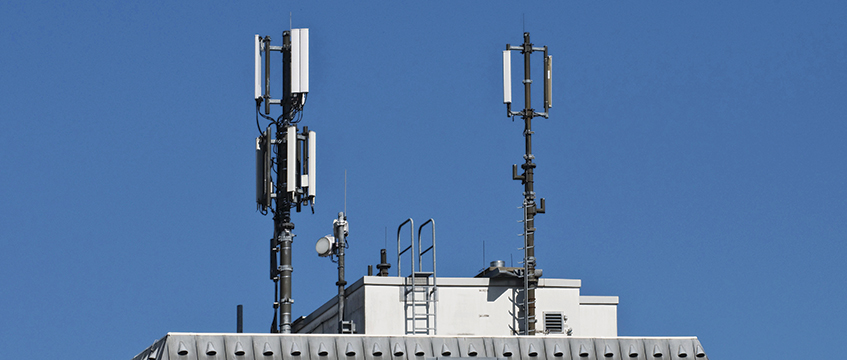Louise Clark analyses a case in which a telecoms operator was held to be entitled to claim code rights after losing renewal rights under the 1954 Act.
Key points
- The regimes under the 1954 Act and the Code are sequential, not concurrent
- An operator which has lost its rights under the 1954 Act can claim new code rights provided that the merits of renewal have not been considered
The First-tier Tribunal has clarified the relationship between the Landlord and Tenant Act 1954 and the Electronic Communications Code contained in schedule 3A of the Communications Act 2003 in On Tower UK Ltd v Gravesham Borough Council (LC-2023-000391, 18 October 2023), which concerned an application to strike out a reference to the Upper Tribunal (Lands Chamber) for new code rights after loss of renewal rights under the 1954 Act.
Background
The case concerned the occupancy of a rooftop site at the Hive, an eight-storey residential building owned by Gravesham Borough Council. Electronic communications apparatus had occupied the site since 1997 under a 20-year lease, protected under the 1954 Act, which was now vested in On Tower. Gravesham needed to carry out repairs to a leaking roof and could not do so without removal of On Tower’s apparatus.
Lift-and-shift provisions to allow the works to be carried out could not be agreed and, in December 2021, Gravesham served notice to terminate the lease. On Tower applied to the county court for a new tenancy and its application was issued on 12 July 2022. However, owing to problems at its solicitors’ office, the claim form was not served within four months, ie by 12 November 2022, as required under CPR 7.5. The court refused to extend time for service and the claim was dismissed on 23 February 2023.
On 17 February 2023, On Tower had served a notice under paragraph 20 of the Code requiring Gravesham to confer on it a code right. It referred the matter to the UT on 27 June 2023. It was that reference which Gravesham sought to strike out.
The law and the arguments
The FTT agreed with Gravesham that there was no dual protection under the 1954 Act and the Code. An operator with 1954 Act protection cannot rely on Part 5 of the Code – this is expressly excluded by paragraph 6(2) of the transitional provisions – and cannot seek to impose code rights under Part 4 either (Cornerstone Telecommunications Infrastructure Ltd v Compton Beauchamp Estates Ltd and conjoined appeals [2022] UKSC 18; [2022] EGLR 28).
However, the regimes, while not concurrent, are sequential, for two reasons:
■ First, an operator must use its 1954 Act rights to renew its tenancy, which will then be caught by section 43(4) of the 1954 Act, and when that lease expires Part 5 of the Code will be available. So, following a 1954 Act renewal, the Code agreement will transition to Part 5 of the Code on any subsequent renewal.
■ Second, where a 1954 Act renewal fails, the site owner can only enforce its right for removal of the operator’s apparatus under Part 6 of the Code. This contrasts with a “vanilla” 1954 Act lease which, under section 64, terminates three months after final disposal of the application by the court, and after that period a landlord can seek a possession order.
Gravesham also argued that On Tower could not have a second bite at the cherry by making an application under Part 4 where its application to renew the agreement under the 1954 Act had been unsuccessful.
On Tower maintained that an operator which had failed to obtain a new tenancy under the 1954 Act was permitted to claim new code rights under Part 4 by paragraph 40(8), which provides that the court may not make an order for removal of electronic communications apparatus if an application has been made under paragraph 20 and not determined.
The dismissal of On Tower’s 1954 Act renewal claim was made solely under the Civil Procedure Rules because the application was not served in time. The merits of renewal under the 1954 Act were not engaged. It was not the kind of rejected or failed application which the Supreme Court in Compton Beauchamp had in mind when confirming that an operator whose application had failed under Part 5 could not make an application under Part 4.
Where, for example, a site owner defeats a renewal application on the grounds of redevelopment – or indeed any of the grounds under section 30(1) of the 1954 Act – an operator could not hope to make a successful paragraph 20 application in response to a removal application.
Gravesham conceded that On Tower’s conduct was neither improper nor an abuse of process. There were genuine problems at On Tower’s solicitors’ office which explained the delay in service. While they were insufficient to obtain an extension of time for service of the claim form, the judge was satisfied that there was no abuse of process.
Timing
The paragraph 20 notice was served on 17 February 2023, but the 1954 Act claim was not dismissed until almost a week later, 23 February 2023. Under section 64 of the 1954 Act, the tenancy was determined three months after the date of formal discharge of the 1954 Act claim on 23 February 2023, rather than the latest date for service of the claim form, on 12 November 2022 (Aktas v Adepta [2011] QB 894).
Gravesham served notice to enforce removal of the apparatus on 30 May 2023. The FTT was satisfied that the reference to the UT on 27 June 2023 was made when On Tower was vulnerable to an application for removal of its apparatus.
On Tower could access Part 4 of the Code in response to Gravesham’s application to enforce removal of its apparatus under Part 6, to ensure that its service was maintained.
Louise Clark is a property law consultant and mediator








